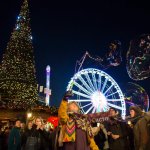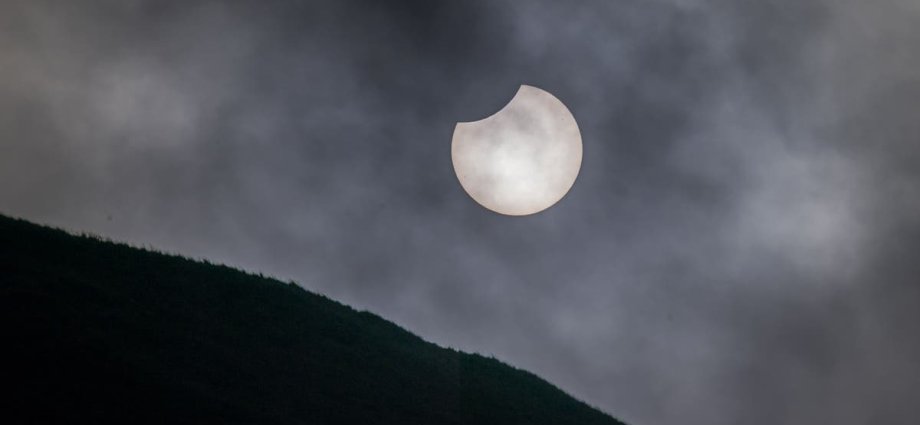A partial solar eclipse will be visible in parts of the UK this weekend, but cloudy and rainy days could hamper those wishing to catch a glimpse.
The phenomenon occurs when the Moon passes between the Sun and the Earth. The three will not be completely aligned, meaning only part of the Sun will be obscured.
The eclipse is expected to be visible in the UK from 9.56am to 12.14pm on Saturday, with the peak in London at around 11.03am.
Those in northern parts of Scotland – which on a clear day would be one of the best places for viewing the eclipse – may be left disappointed due to cloud cover.
Stephen Dixon, spokesman for the Met Office, said: “There’s patchy cloud around on Saturday in the south.
“The north west of Scotland, which has the best window for seeing the partial solar eclipse, is unfortunately going to see rain and cloudy skies.
“However, those further south in England on Saturday should see some break in the cloud.”
Wet weather is expected to move in over the next few days, with rain forecast in Scotland and western parts of Northern Ireland on Thursday and lighter bursts moving south-eastwards to England.
Mr Dixon added: “There’s a bit of a split for the weekend weather, with more frequent wind and rain in the north of the country, particularly Scotland and Northern Ireland.
“Those further south will generally be drier through the day on Saturday.
“Hints of high pressure building from the south west will, on Sunday and through to the start of the week, settle the UK’s weather down again and bring a fair degree of dry, fine weather with patchy clouds at times, but also some sunshine as we move through to the start of next week.
“It’s fairly common for UK spring that we get these periods of rain, of fronts moving in from the west and northwest and also high pressure moving in from the south. Really it’s part of the UK’s position meteorologically, we see these competing dominant weather regimes.”
Temperatures could peak at 17C in the south east of England on Sunday, with highs of 14C possible further north.
Another phenomenon, the Northern Lights, were visible in Whitley Bay, Tyne and Wear, early on Wednesday, where skies remained clear.
Mr Dixon said: “People have noticed the Northern Lights more in the last year as the Sun is in its solar maximum phase of an 11-year cycle, meaning higher frequency of solar activity on the Sun.
“It can interact with the Earth’s atmosphere and bring us the Northern Lights as we know them in the UK.
“There’s a chance of aurora sightings over northern Scotland tonight, but there is some cloud and rain moving in so the best chance of visibility is further east of Scotland.
“That chance of aurora sighting continues over Thursday and Friday.”











